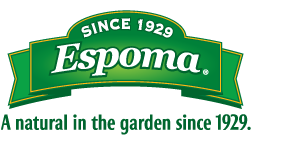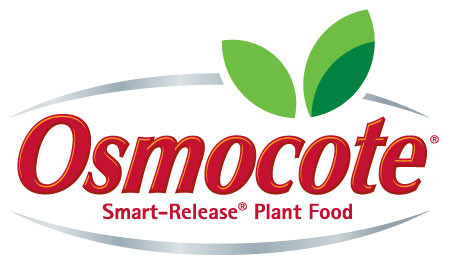I received an e-mail the other day from a woman that needed some scale identified on her Citrus and she also wanted to know what was growing on her Cherry tree. In case you are wondering, the scale was Cottony Cushion Scale, easy enough to eradicate. The stuff growing on her Cherry tree was also easy to identify, it was Lichens. The way to pronounce this is "Like-Ins".
They are among the most interesting organisms on the planet. Just so that there is not a mad dash to rid your tree, rocks, gravestones or whatever you have them growing on, they will cause you, nor the thing they are growing on, any harm. Although the Lichens are attached to the bark or penetrate into it a short distance, they do not enter the inner bark where food is transported, and hence do not rob the tree of nourishment.
A Lichen is a plant. It has no leaves, stems or roots, but like other plants it makes its own food using energy from sunlight. When a lichen is wet from rain or dew it grows actively, but when it dries out in Summer, it stops growing. However, the lichen does not die, but instead lies dormant until the next rain starts it growing again. They can come in many forms: paint-like rusts; scalloped, wrinkled sheets; lace-like pads; bushy tufts; unkempt strands of black, gray or green "hair". You have probably seen some and never even realized, that is what you are looking at.
What is amazing about these things is every Lichen species is actually composed of two, possibly even three, distinct species of organisms. One species is a kind of fungus. Usually the other species is an algae, but sometimes it can be a photosynthesizing bacterium known as a cyanobacterium. Sometimes all three organisms are found in one Lichen.
Lichens first appeared about 400 million years ago so they have been around for a long time. Some individual species have been around for at least 25 million years and maybe for as long as 70 million years. Obviously, they have figured out the essentials of good living!.
If you have Lichens on your trees it is a good sign. Minerals in the air such as tiny, dust-like particles of soil are carried by the wind to the surface of Lichens. There, dissolved in rainwater, they are taken up by the lichen and used for growth. Small amounts of airborne minerals, the amounts found in clean air, are beneficial to the Lichens. However, it is possible to get too much of a "good" thing. Large amounts of minerals, such as the amounts found in polluted air, will poison the Lichens and kill them. Whether we live in a city or way out in the country, each of us would like to have the assurance that the air in our own neighborhoods is clean, right?
Wouldn't it be nice if there was a measuring device that was cheap, that can be used anywhere, and that responds to many kinds of airborne pollutants? Lichens, especially those which grow on trees, can provide just such a device. If you are planning on moving into a new area, drive around and look on the trees, especially older trees, you see Lichens, you probably have pretty clean air.
I highly don't recommend trying it, but Lichens are eaten by many different cultures across the world.
In Japan, one species, Umbilicaria esculenta, is considered a delicacy where it is eaten as a soup or in salads. In the Northern Tundra, Reindeer and Caribou eat loads of Lichens. Lichens can make up half the food these animals will consume during the Winter. They are dug up from below the snow by the hungry animals. Eskimos harvest and store these Lichens as part of the Winter feed for their animals. Very few lichens are actually poisonous, but those high in vulpinic acid or usnic acid are toxic. Most poisonous Lichens are yellow. I would consider these like mushrooms, unless you know exactly what you are doing, don't eat them!
There are also other uses, both current and in years past, that are rather interesting.
Extracts from many species were used to treat wounds in Russia in the mid-twentieth century.
In Mediterranean countries red and purple dyes were long made from species of Roccella. A brown dye has also been manufactured from Parmelia omphalodes. Lichen dyes are still sometimes used for Harris Tweed, but the production of more modern dyes and ecological concerns over the amount of Lichens harvested have pretty much rendered Lichen dyes obsolete. Lichens are still used in the perfume industry though. It is estimated that around 9,000 tons of lichens are used this way each year. Lichens are also used as packaging materials by some florists and one study revealed that about 18,000 tons of Cladonia stellaris was exported from Finland to Germany and other European countries for this purpose.
Lichen is used in model railroading and other modeling hobbies as a material for making trees and shrubs.
So next time you are walking through the woods, take a look around you, the Lichens you see might be in your next bottle of perfume or that little tree in your child's train set.
Happy Growing!
Darren
Added 12-29-2010
This is my entry into an Epiphyte contest. I hope you enjoy it!
To see the contest, please go to: http://www.therainforestgarden.com/2010/12/epiphyte-blog-carnival-and-giveaway.html
Make sure you enter.
Subscribe to:
Post Comments (Atom)













I love the way they add an element of depth to branches and the silver gray is so wonderful on a misty morning on the marsh sidelines.
ReplyDeleteNice informative post, Darren. I was taking some lichen/bark pictures just the other day to make a background for a site.
ReplyDeleteLichen growing on rocks in the Blue Ridge Mountains call "Rock Scalp" can be used as survival food. I have tried it - not bad if - if you need to eat it.
ReplyDeleteI would like to take this chance to pass along a great contest!
ReplyDeletePlease check out: http://www.therainforestgarden.com/2010/12/epiphyte-blog-carnival-and-giveaway.html
Great post. I entered the contest too so I am checking out the entries and making new friends. Lichens are very interesting!
ReplyDelete